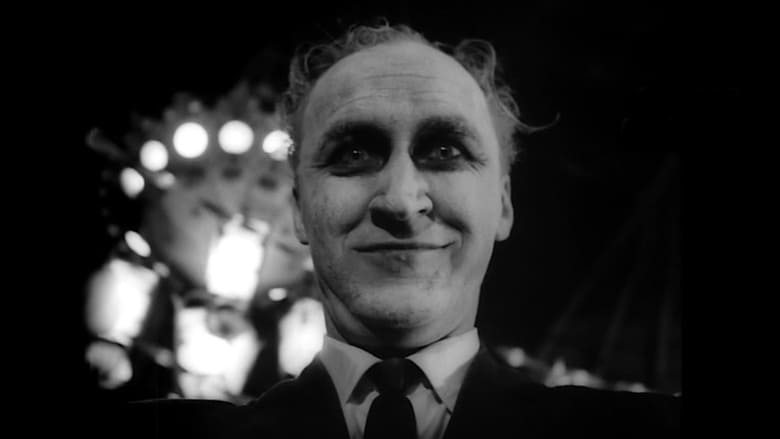← Back to Reviews

in
After surviving a severe car accident, a woman travels to a new town to start another job but is plagued by nightmarish visions.
On the surface, Carnival of Souls looks like it could be yet another cheaply-produced mid-20th-century American B-movie that would be right at home in an episode of Mystery Science Theater 3000 with its stilted performances and amateurish technique. Of course, in some cases that quality turns out to be a feature instead of a bug and it's very much the case with Carnival of Souls, which takes a less-is-more approach to horror that might not be altogether obvious when starting the film. The plot even seems like a simple enough slice of small-town drama as it follows Mary as she moves to a new town following her improbable survival of a drag-racing crash. She works as a church organist despite not showing any particular signs of faith and moves from one church to another, setting up in a small boarding house as her new residence. However, as she arrives in town she finds herself being haunted by strange sights and sounds, most prominently the eerily grinning visage of a pale, black-eyed man in a suit. Even if that weren't a problem, the town itself is more than a little strange; leaving aside the abandoned pavilion on the edge of town, there's also the various individuals that Mary encounters who would prove a problem (most notably the extremely presumptuous male lodger who constantly makes advances towards her from the moment they meet).
Going into any film that you know has drawn a considerable cult following can always be a double-edged sword as so many of those films earn said followings by appealing to distinctly off-kilter perspectives that you yourself may not share, hence why so many of them are so incredibly polarising. I would consider Carnival of Souls itself to be a polarising experience as it proves a strange combination of shoestring dramatics and genuinely surreal horror that thankfully doesn't stretch itself thin and keeps things to a lean eighty-ish minutes. There is something distinctly proto-Lynchian about its juxtaposition of its protagonist's seemingly mundane troubles with adjusting to her new small-town life and the surreal depictions of creeping dread that begin to follow her wherever she goes, especially when the two start to bleed together and cause severe consequences. The low-rent nature of the film not only necessitates some inventiveness on the creators' part but actually pays it off when it comes to effective horror, rendering the somewhat plodding first two acts as ultimately worthwhile preamble to a truly unsettling third act. It's a curious piece of work that definitely earns its cult following for crafting some remarkable imagery and builds up to a persistent sense of dread after a while, which definitely elevates it above similar B-movies of the era.
#23 - Carnival of Souls
Herk Harvey, 1962

Herk Harvey, 1962

After surviving a severe car accident, a woman travels to a new town to start another job but is plagued by nightmarish visions.
On the surface, Carnival of Souls looks like it could be yet another cheaply-produced mid-20th-century American B-movie that would be right at home in an episode of Mystery Science Theater 3000 with its stilted performances and amateurish technique. Of course, in some cases that quality turns out to be a feature instead of a bug and it's very much the case with Carnival of Souls, which takes a less-is-more approach to horror that might not be altogether obvious when starting the film. The plot even seems like a simple enough slice of small-town drama as it follows Mary as she moves to a new town following her improbable survival of a drag-racing crash. She works as a church organist despite not showing any particular signs of faith and moves from one church to another, setting up in a small boarding house as her new residence. However, as she arrives in town she finds herself being haunted by strange sights and sounds, most prominently the eerily grinning visage of a pale, black-eyed man in a suit. Even if that weren't a problem, the town itself is more than a little strange; leaving aside the abandoned pavilion on the edge of town, there's also the various individuals that Mary encounters who would prove a problem (most notably the extremely presumptuous male lodger who constantly makes advances towards her from the moment they meet).
Going into any film that you know has drawn a considerable cult following can always be a double-edged sword as so many of those films earn said followings by appealing to distinctly off-kilter perspectives that you yourself may not share, hence why so many of them are so incredibly polarising. I would consider Carnival of Souls itself to be a polarising experience as it proves a strange combination of shoestring dramatics and genuinely surreal horror that thankfully doesn't stretch itself thin and keeps things to a lean eighty-ish minutes. There is something distinctly proto-Lynchian about its juxtaposition of its protagonist's seemingly mundane troubles with adjusting to her new small-town life and the surreal depictions of creeping dread that begin to follow her wherever she goes, especially when the two start to bleed together and cause severe consequences. The low-rent nature of the film not only necessitates some inventiveness on the creators' part but actually pays it off when it comes to effective horror, rendering the somewhat plodding first two acts as ultimately worthwhile preamble to a truly unsettling third act. It's a curious piece of work that definitely earns its cult following for crafting some remarkable imagery and builds up to a persistent sense of dread after a while, which definitely elevates it above similar B-movies of the era.
